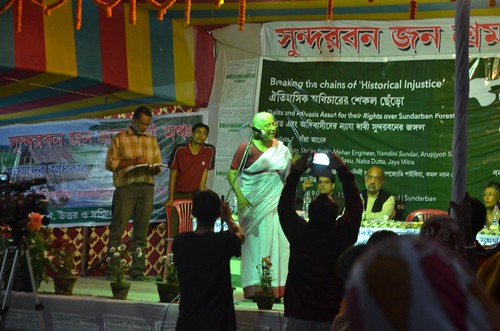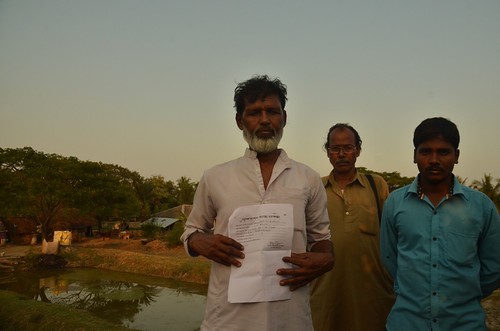In the first of the four part-series, we look at the livelihood challenges that trouble the people of Sunderbans, West Bengal. Although famed for its Tigers, mangroves and breath-taking beauty, the residents have for long been fighting on several fronts. In the first part, we look at how Forest Rights Act has hardly been implemented in the region. This story is based on a Public Hearing held in January.
By Amit Kumar, Twocircles.net
On the morning of January 31, the primary school located in the village of Uttar Danga, Sunderbans, got ready to host the Public Hearing organised by the Sundarban Jan Shramik Sangathan, All India Forest Workers Union and the Delhi Support Group.

During the course of the day, about 300 people came and participated in the engaging, yet confusing, discussions around the Forest Rights Act. In front of a panel consisting of Medha Patkar (Social Activist), Advocate Sanjay Parikh (Senior Lawyer, Supreme Court of India), Professor Nandini Sundar (Delhi School of Economics), Arupjyoti Saikia (Professor, IIT Guwhati), Naba Dutta (General Secretary, Nagarik Manch and Social Activist), Dr. Kamal N. Chaubey (Researcher on Forest Rights Issues), and Jayanta Basu (Senior Journalist, Telegraph), the day witnessed dozens of people talking about their woes with regards to, mostly, the mistreatment of fishermen and honey collectors by the forest officials. The panelists heard all the cases, each worse than the other: stories of molestation, assault, abuse, bribery and other crimes by the Forest Officials. The panel offered their advices, often through a translator, while attempting to explain to the audience about the powers that they no one could deny them under the Forest Rights Act. Their full recommendations can be read here.
While the Forest Rights Act has existed for a decade now, its achievement across India has been mixed: in case of Sunderbans, however, the public hearing showed that the Act has barely been implemented to begin with, at least when it comes to guaranteeing livelihood to the 4.2-million strong population which lives on the 54 inhabited islands in the Sundarban Biosphere Reserve.

Take the case of Younus Mollah, a resident of Baghmara, a village close to Uttar Danga. His boat was seized by the forest department near the core area of the Reserve, which is out of bounds for fishing. This is what the Forest Officials claimed, but Mollah sticks to his response. “All my previous generations have been fishing here and I know the waters. Would I not know where to not enter?” he asks, almost as if someone around him was supposed to answer. He was holding the Challan of Rs 1,500, which he had paid on December 30. “My boat hasn’t been released and I do not why. I went to the forest officials again, but to no avail. Why else would I be here? Wouldn’t I be fishing now?” he says, almost breaking into a rueful smile.
Mollah’s story is just one of the thousands that find commonplace across islands and its villages. For the past 40-odd years, its inhabitants have tried their best to understand, and adapt, to an ever-changing, and mostly worsening, landscape. And while they are doing this, they have been spun around in an entangled web of laws.
Apart from FRA, the Sunderbans also comes under the protected area (PA) designations under the Wild Life (Protection) Act (WLPA), 1972, (as amended in 2002 and 2006) Core or Critical Tiger Habitat (2007), National Park (1984), and Wild Life Sanctuary (1976).

The efforts to save Sunderbans, and thereby the Royal Bengal Tiger, goes back to the Project Tiger days, when it was declared as the Sundarban Tiger Reserve (1973), under the Project Tiger of the Ministry of Environment, Forests and Climate Change. Other special designations are the World Heritage Site and Biosphere Reserve (SBR) (1989).
All this, and yet, in the village of Uttar Danga, where the public hearing was held, it was difficult, nay, impossible, to get a glass of clean, drinking water. The hand pumps provide brackish water to the residents and for all the Acts, not one seems to be equipped the matter of providing clean, drinking water to all villages across all islands.

